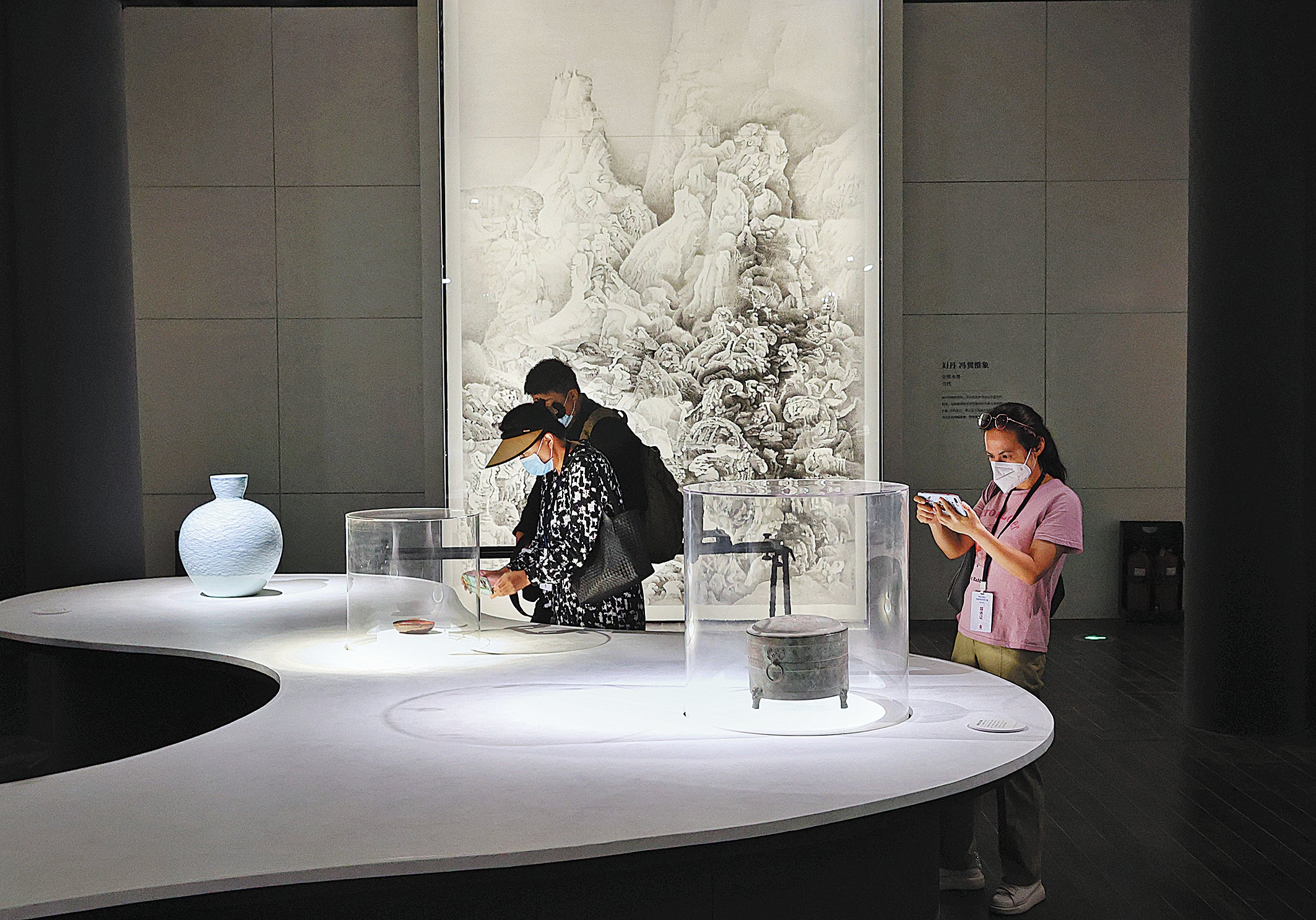Spaces where great thoughts stand the test of time
THE ARTICLES ON THESE PAGES ARE PRODUCED BY CHINA DAILY, WHICH TAKES SOLE RESPONSIBILITY FOR THE CONTENTS

To create an infinite universe all that is needed are scrolls of paper, volumes of books and a writing brush. They can reveal a soul dedicated to a metaphysical world and a refined lifestyle.
Generations of ancient Chinese literati knew that a study, be it a shabby thatched shelter with moss growing up its stone walls, or a spacious room equipped with luxurious furniture, could be a place to retreat from the cacophony of the outside world and fully demonstrate the power of thinking.
Stationery, ceramics, paper-based artworks such as paintings and calligraphy, as well as various cultural relics that once accompanied or witnessed the self-cultivation of the ancient literati, may be physical evidence of an adaptable mentality. However, it probably still needs modern visitors to embrace their inner tranquillity to tune into the aura of grace and sentiment.
In Beijing, at the Palace Museum, also known as the Forbidden City, the exhibition Mirroring the Heart of Heaven and Earth: Ideals and Images in the Chinese Study opened to the public on August 30, 2022. Located in the Meridian Gate Galleries, it reveals that literary thought has lingered through time.
“A study is not only a space to read, write and collect books,” Wang Zilin, curator of the exhibition, says. “It also marks the continuous lineage of culture and reflects a bigger picture of social prosperity.
“The exhibition may reveal an interdependent relationship between the literati and the items in their studies. We can think of calligraphy and paintings with strong Chinese characteristics as being ‘co-created’ by them as well.”
Of course, the “Four Treasures of the Study”, referring to writing brushes, paper, ink and the inkstone (mortar to grind the ink), are the highlights in the exhibition. Exquisitely manufactured stationery, some items of which were owned by royals, may reflect how devoted to their work the literati were.

“The literati’s philosophical thinking concerning heaven and Earth could have also been inspired through other exhibits on show, such as jade and bronzeware,” Wang says.
In ancient China jade and bronze artefacts bear key roles in traditional rituals of worship and reflect people’s views about the universe, Wang says. They are commonly seen in studies, such as an exhibited bronze vessel dating back to the Shang Dynasty (c. 16th century-11th century BC), and a Qing Dynasty (1644-1911) jade cong, with a pattern that first appeared more than 5,000 years ago.
Guqin, the traditional Chinese plucked musical instrument associated with a sense of unadorned antiquity, may also create the perfect atmosphere for a study. Watching an exhibited guqin from the Southern Song era (1127-1279) being played, visitors can imagine a scenario in which ancient sages refer to its slow but refined melody for mental cultivation.
The great poet Tao Yuanming (365-427), also known for his reclusive lifestyle, once said: “In my younger years I remained aloof to worldly affairs, and literature and music were my haven.”
It was this musing that inspired him to design the exhibition, Wang says. Tao’s words hung on the wall of the gallery may also enlighten visitors, encouraging them to think of their own paths they find to sneak away from their mundane daily routines, if only for a while.
The Orchid Pavilion Preface, created by the 4th-century calligraphic guru Wang Xizhi, is probably one of the everlasting Chinese literary classics about a gathering of literati. Though being outdoors, the pavilion in present-day Zhejiang province is perhaps among the most famous studies in China.
The whereabouts of the original work is now unknown, but facsimiles from generations of calligraphers still enable modern people to enjoy it and envision the glamour of the event described. As such, one of these copies, made by Mi Fu, one of the most acclaimed calligraphers of the Northern Song era (960-1127), is a must-see at the exhibition.
Ren Wanping, deputy director of the Palace Museum, says the exhibition also has modern significance, encouraging people to think about what a study means in a modern context.
“People are exposed to a vast cyberspace and numerous virtual worlds. But inside our hearts there is always space for an invisible study, for reading, thinking and reflection.”
